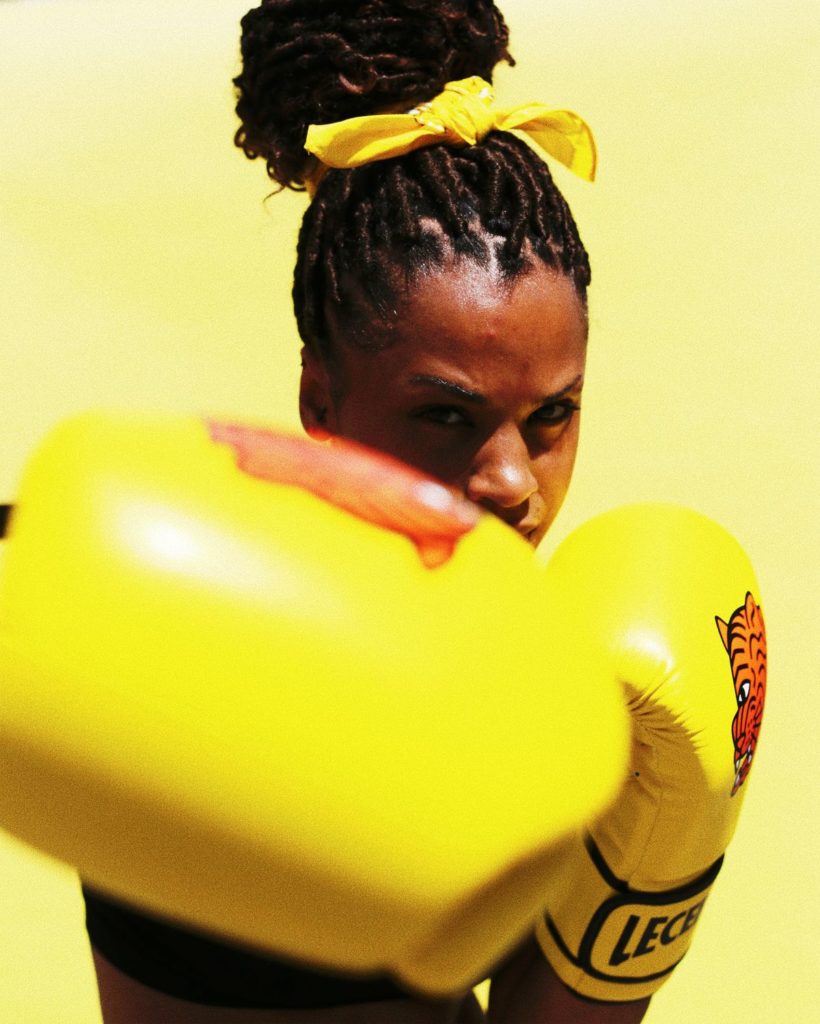
Welcome » Welcome » World Boxing » Difference between English boxing and French boxing: which to choose?
Boxing is today's new sports trend. Between 2015 and 2016, the number of licenses purchased increased by 17% in France, which reflects the popularity enjoyed by this sport. But among all the sectors that boxing makes up, how to choose? Between English boxing and French boxing, make the choice that suits you!

English boxing is among the most ancestral disciplines in the field of boxing. At the height of its prestige, let us tell you a few words about it.
This discipline has accompanied humanity for thousands of years. You've probably already heard about it. It finds its place in our culture, through our leisure activities, our art, or our means of defense.
With your hands in front of your face, your feet firmly anchored and your chest braced, you can only use punches.
To put all your technique at the service of victory, in boxing, you must master defense (dodge, parry, slide, etc.), as well as attack (jab, direct, hook, uppercut, etc.). Discover all the defense techniques English boxing on our blog.
English boxing is recognizable by its competition regulations. Discipline governed by strict regulations, sees its fighters being categorized by weight during competitions. In order to make the sport as fair as possible between boxers, there are 17 weight categories in boxing.
Concernant les zones de frappe autorisées, toutes les parties du corps de l’adversaire sont des cibles potentielles, sauf l’arrière de la tête, ainsi que les membres inférieurs, qui sont interdits.
It is also forbidden to hit an opponent who is already on the ground or getting up.
If in its origins, English boxing was practiced with bare hands, this is no longer the case today. For safety reasons, boxers are well protected, both for their protection and that of their opponent.
The equipment required, from most essential to least important, is as follows:
After this anthology of information on English boxing, it is time to focus a little more on French boxing.
Discipline héritée de l’escrime, la boxe française est nommée “savate” ou “art de la savate” au XIXe siècle. Aujourd’hui, on la connaît sous le nom de “savate boxe française”.
Very widespread in France, we have more than 50,000 licensees in this discipline, practicing in a club regularly.
French savate boxing techniques are divided into two complementary categories:
Fists are used to hit your opponent in the face and chest. Kicks are delivered to the face, chest and legs.
In this boxing, there are grades, called “gloves”. Taking the model of colored belts in judo, these “gloves” range from blue to bronze. They determine the level of the boxer.
In competition, in certain cases, a minimum level is required. Not all competitions are therefore open to all grades.
Il est interdit de porter un coup avec le gant ouvert ou le tranchant extérieur de la main. L’utilisation de l’avant-bras, du coude, du genou, du tibia, de la tête, et de l’épaule, est également interdite.
Finally, hitting an opponent who is already on the ground or getting up is prohibited, as is hitting your opponent below the belt, hanging on to the ropes of the ring, etc.
Renowned as a complete sport, French boxing requires specific and complementary equipment.
The equipment required, from most important to least important, is as follows:
Between English boxing and French boxing, you will have understood, there are similarities and differences. If you want to start practicing boxing, the following will allow you to find THE discipline made for you!
The principle is the same in English boxing and French boxing: fighting by alternating attack and defense, using movements and blows against an opponent.
Like almost all the disciplines making up boxing, the place of practice in competition is the same: the ring.
Outside of competition, the two boxing disciplines in which we will focus are practiced in particular in dedicated clubs. According to the FFB (French Boxing Federation), there were more than 800 boxing clubs in 2015, all boxing disciplines combined.
Dans ces deux disciplines, vous pouvez retrouver un équipement de protection similaire, sport de combat oblige. Enfin, les techniques d’attaque et de défense se ressemblent, notamment celles qui engagent les poings.
Now for the differences!
While English boxing is limited to the use of the fists, French boxing also uses the feet.
And because the feet are among the main fighting tools in boxing, it is essential to protect them through thick and thin. The practice of French boxing is therefore done with specific shoes, as well as shin guards.
If you have reached this point in the article, you may have noticed one of the differences between the two disciplines during competitions. Where in English boxing, boxers are categorized by weight, French boxing fighters are divided by level (“gloves”).
But that's not all. Boxing competitions are played in the format of a “fight”. This induces a face-to-face confrontation between two boxers, in which one of the ways to win is to knock out your opponent.
Conversely, the outcome of French boxing competitions is not so clear-cut. Some competitions are called “assaults”, in which only technique counts. The boxers are evaluated by a jury, which decides the boxer with the most qualitative technique.
There is no better or worse boxing discipline, there are only preferences. You are free to choose the direction you want to take among all the types of boxes that exist.
English boxing is more widespread, but if you want to try a slightly more complete sport, French boxing is for you.
Because the feet are also used, French boxing offers you a greater variety of sequences.
If your goal is power, then English boxing is more suitable. Conversely, French boxing emphasizes technique, more than strength.
In other words, boxing is perfect for letting off steam after a tiring day. French boxing, far from being less interesting, enhances your technique and is perfect if you want to progress in boxing.
Boxing is still seen as a masculine sport, but make no mistake, women know how to throw a punch. No matter your gender, boxing adapts to you. Among the 800 clubs in France, you will inevitably find one that will satisfy you.
The only area in which boxing is divided by gender is competition. Indeed, today, women and men do not fight against each other, for reasons of muscularity.
But be careful, history has taught us that women can beat men in boxing. In 1999, the first official fight between a woman and a man was won by boxer Margaret McGregor.
Malheureusement, dans le milieu de la compétition, le sexe féminin n’est représenté qu’à 10%. Peut-être que vous ferez pencher la balance !
Because one thing is certain, whether it is in English boxing or French boxing, you can do it ladies. And if you want to practice boxing as a daily activity, variations are possible, such as combat boxing or fitness boxing.
By fitness boxing we mean the combination of fitness and boxing. The idea is to compose your workout of sequences of blows, to the rhythm of the music. Not only does this variation work your cardio, but it also stimulates your coordination and tones your muscles.
Peut-être que ce sport vous intrigue. Dans ce cas, Paris est le lieu idéal pour s’y mettre. Dans les rues du 18ème arrondissement, vous trouverez le studio Le Cercle Boxing. Bien loin de la boxe classique avec ses combats et proche d’un véritable concept de boxe fitness, défoulez-vous au rythme de la musique et muscler votre corps.
All you have to do is make your choice!
(*pizza could actually be our newsletter, but it's pretty good too)
Our studios
Le Cercle Boxing – Boxing club in Paris
6 rue de Clignancourt, 75018 Paris
Le Cercle Boxing – Studio Beaubourg – Boxing club in Paris
60 rue Quincampoix, 75004 Paris
Le Cercle Boxing – Studio Bastille – Boxing club in Paris
28 rue Popincourt, 75011 Paris
Our studios
Le Cercle Boxing – Boxing club in Paris
6 rue de Clignancourt, 75018 Paris
Le Cercle Boxing – Studio Beaubourg – Boxing club in Paris
60 rue Quincampoix, 75004 Paris
Le Cercle Boxing – Studio Bastille – Boxing club in Paris
28 rue Popincourt, 75011 Paris